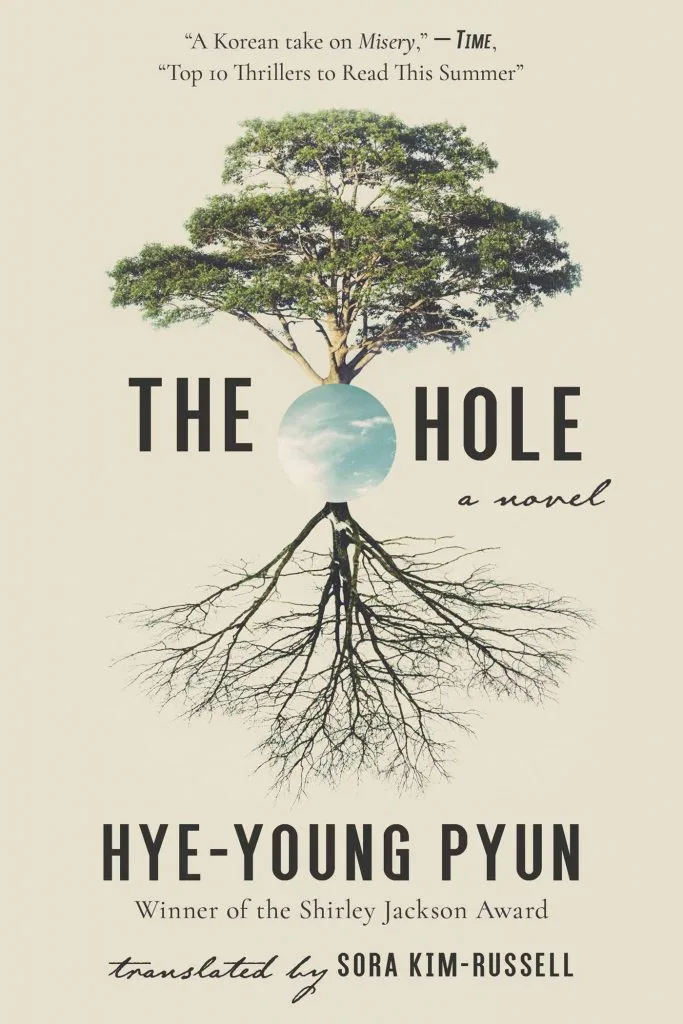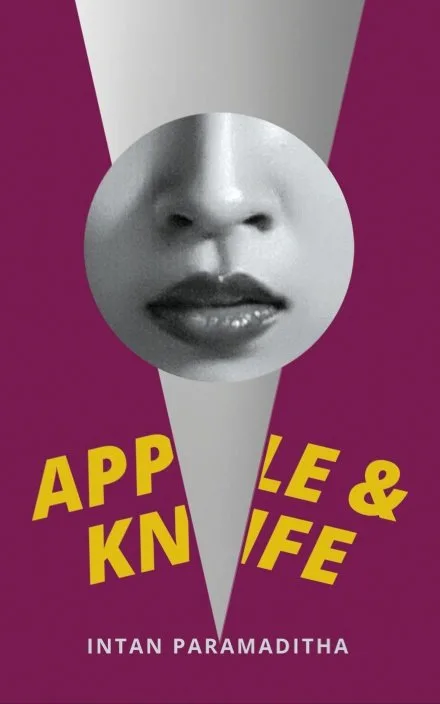Across Asia, women writers are changing the literary landscape by pointing a finger at the patriarchy, by writing clever and innovative genre fiction, by highlighting their unique histories and politics, and this creating exciting and thrilling literature.
Here, we have been very excited to create a list of comics and graphic novels by, who we believe, to be some of the ultimate women of today’s literary world (at least those that have so far been translated into English). For a long time, women’s voices in translation went unheard. But thanks to the amazing host of independent publishers that we’ve come to know and love, we’ve finally been able to hear these voices.
In fact, the contemporary world of literature in Korea and Japan is very much dominated by women (aside from Murakami, of course), and that is truly wonderful to see. In order to keep that trend of women in translation going, we need to keep celebrating women in literature, especially translated literature. So, start with this list! Read it, pick your favourites, buy their books, fall in love with them, and spread the word!
Kitchen by Banana Yoshimoto
Translated from the Japanese by Megan Backus

In Kitchen, Mikage is a young woman who understands life’s pain. She knows loneliness, and she greets it with a knowing smile and a gentle nod. Everything is okay. Bad feelings are permitted. We are whatever we care to be; we make mistakes, and we waste time, and we build a stack of regrets.
Her admittance of that causes her so much pain because she knows that naiveté is dangerous, but the other side of this is freedom. Ignorance is bliss, but knowledge, understanding, is freedom. Yet, with all of that knowledge, in her selflessness she still hopes to avoid others feeling what she feels. She admits that, while she is wise, perhaps it’s easier for some not to be, to avoid the pain.
The Housekeeper and the Professor by Yoko Ogawa
Translated from the Japanese by Stephen Snyder

Much like her contemporaries, Yoko Ogawa has written in The Housekeeper and The Professor a tale of human failing and human intrigue. Ordinary life is captured time and again in the most beautiful ways by the best of modern Japan’s literati. The more we read, the more we see the complexities and captivating beauty in the simplest of gestures. Our relationships are never easy, never dull, and they are certainly worth exploring.
Reducing an epic down to the scale of a short novel; capturing a great struggle within the space of a cluttered room and a mind that cages itself in; moving mountains by struggling through the senseless bickering and the tears, and finding a friendship to be worth the effort. All of that is beautiful; it’s the sign of a master storyteller, and it is worth celebrating. Read her new book The Memory Police.
Strange Weather in Tokyo by Hiromi Kawakami
Translated from the Japanese by Allison Markin Powell

Deep in the trench which separates the old and the new, our protagonist Tsukiko is reunited with her old high school Japanese teacher. She refers to this man only as ‘Sensei’ and through the course of the novel it’s difficult not to become truly invested in the individuals you meet.
Kawakami creates distinct, memorable, and charming characters who you are truly rooting for throughout the novel. Strange Weather in Tokyo is a clash of modern and classic Japanese culture and customs, and of modern and weathered dating methods. The writing is clean, to the point, and surprisingly fast-paced. Read her new books Parade and The Ten Loves of Nishino.
Convenience Store Woman by Sayaka Murata
Translated from the Japanese Ginny Tapley Takemori

Depending on your own disposition, Convenience Store Woman may serve to further kindle the flames of your own existential nightmare, or it may satiate your fears just a little.
Keiko is pressured by those around her to make something of herself, and the person who understands her best is a raucous and barbaric moron who, as written by Murata with hilarious accomplishment, serves as the typically hyper-aggressive masculine counterpart to her far more relaxed take on irregularity in the face of ordinary society.
This pressure breaks her a little, but it also doesn’t. And the ride she is taken on may lead the reader to feel like all of this-this life of ours – is useless and so the crisis sets in anew; or it may liberate them from that lurking, looming fear of failure and stagnation. In that sense, we really feel like we have to work with Keiko, and I am happy to do so. She is a truly wonderful character.
The Last Children of Tokyo by Yoko Tawada
Translated from the Japanese by Margaret Mitsutani

Tawada has, as all great dystopian writers must do, been true to her country. She has taken a real look at the trends, habits, and laws which define Japan, and she has bent and twisted them; not so far as to distort them, but far enough to see where they might lead if left unchecked.
While pollution and contamination play a major role in the state of Tawada’s Japan, she has shown genius in the people’s response to it. In The Last Children of Tokyo, the author takes the time to hold a mirror up to not only pollution but also the average person’s fear of GM crops, pharmaceutical corporations, and so on.
She wonders where contamination of our food and water may lead us, but also the crippling power of irrational fear. And she does this with gall, discomfort, and more than a little humour.
Read More: Where to Get Started with Japanese Literature in 12 Genres
The White Book by Han Kang
Translated from the Korean by Deborah Smith

This story will stay with me for a long time, as much for the experience of reading it than for what is inked on its pages. Its beautiful, snowy pages. All the empty space giving it room to breathe creates the feeling of a living, aching, mending story.
The White Book is easily an experience inasmuch as it is a novel. I’d urge all Han Kang fans to read it, but also anyone looking for a very different kind of art; art which is difficult to explain and more difficult to talk about afterward.
Flowers of Mold by Seong-nan Ha
Translated from the Korean by Janet Hong

To say too much about these stories, to analyse and study them, is to lose something. It’s better to sit quiet and let them wash over you. They’re odd, and they know you. If you open yourself up to them, let them worm their way down your spine, you may struggle to sleep and you may find yourself turning your head twice as you walk down a lonely corridor, but it’s all worth it to experience tales of this gravity.
Flowers of Mold is unhinged just enough to make an uncomfortable noise as it opens up and all its demons spill out. Here is, undoubtedly, one of the best translated short story collections of 2019.
The Court Dancer by Kyung-sook Shin
Translated from the Korean by Anton Hur

Based on a true story – set in the final years of 19th century Korea as China, Russia, and Japan are threatening the little nation trapped between them – The Court Dancer is being described as a love story first and foremost: the romantic tale of a man and a woman from two different worlds, colliding in a moment of beauty.
And, sure, that’s fine, but really this is the tale of a woman born without a family, adopted into the courts of the Joseon Dynasty, romanced by a French diplomat, whisked away across the waves to foreign shores, and all the while trying to find the time to understand who she is, what she is, and what she wants out of a life that has never really been hers.
The Hole by Hye-young Pyun
Translated from the Korean by Sora Kim-Russell

Where The Hole shines, and wherein lies its true terror, is the state of our protagonist’s body and his mind. So much horror and suspense writing relies on running, hiding, chasing, and being lost. But Oghi is not lost, and he cannot run.
He is trapped from page one. In choosing to ignore the tropes which make horror what it has become famous for, Pyun has crafted a very new kind of terror which builds on the writing of Franz Kafka, but with none of the black humour that results in staring into the void. Instead, it replaces that with true, absolute dread which is maintained like a painfully drawn-out musical note for hours, page after page after page.
Read her new books The City of Ash and Red and The Law of Lines.
Read More: The Best Translated Dystopian Fiction
Apple and Knife by Intan Paramaditha
Translated from the Indonesian by Stephen J Epstein

Apple and Knife is a book that does more than push boundaries; it breaks them down completely. Patriarchal traditions, Muslim values, and cultural superstitions are all questioned and held accountable here.
Every story is at once a garish and nasty folktale to be enjoyed and gasped at, but also serves as a reminder to women that they are strong and fierce and dangerous. And that we men should take stock of our privileges, and the boxes we force women into, whether we are aware of it or not. You can also check out Intan’s new choose-your-own-adventure book The Wandering.
Read More: Five Indonesian Writers you Should Know.
My Lesbian Experience with Loneliness by Kabi Nagata
Translated from the Japanese by Jocelyne Allen

“It’s impossible not to shed tears while reading this work; Nagata’s unflinching honesty is courageous, but the reason it resonates is that it passes experiences many of her readers have, but have never been able to give voice to. Nagata gave voice to her experience and that has allowed her readers to realize they are not alone.” (Hans Rollman, Pop Matters)
Bad Friends by Ancco
Translated from the Korean by Janet Hong

There is a tightrope act at play here, performed with expert precision, between the dangerously bleak art by Ancco and the delightfully poisonous translation by Janet Hong. Thanks to the execution of this double-act, we get a horrid, dreadfully real story of life far outside of happiness.
Bad Friends is not a pleasant tale, but it’s one that takes place in a world we know far too little about. And learning can often be a painful but necessary experience. And cathartic, too.
Asian women in translation are some of the world’s best writers today, but they’re of course not the only women in translation for you to discover and enjoy. For more women in translation from across the world – The Middle East, Europe, Latin America – take a look at our list of women in translation from around the world, all released in 2019, and join us in celebrating the wonder of women in translation month together!
Read More: Where to Get Started with Manga



